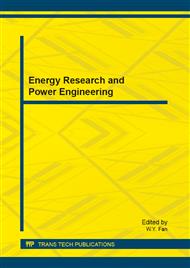[1]
Lee. Chun-Ying, Lin. Chao-Sung, Jian. Rui-Quan and Wen. Chih-Yung, Simulation and experimentation on the contact width and pressure distribution of lip seals, Tribology International, Vol. 39(9), 2006, pp.915-920.
DOI: 10.1016/j.triboint.2005.09.002
Google Scholar
[2]
P. Trapper and K.Y. Volokh, Cracks in rubber, Int J Solids Struct, Vol. 45, 2008, pp.6034-6044.
DOI: 10.1016/j.ijsolstr.2008.07.016
Google Scholar
[3]
W.V. Mars and A. Fatemi, A literature survey on fatigue analysis approaches for rubber, International Journal of Fatigue, Vol. 24, 2002, pp.949-961.
DOI: 10.1016/s0142-1123(02)00008-7
Google Scholar
[4]
Knowles J. K and Sternberg E, Finite deformation analysis of the elastostatic field near the tip of a crack:reconsideration and high-order results, Journal of Elasticity, Vol. 4, 1974, pp.201-233.
DOI: 10.1007/bf00049265
Google Scholar
[5]
GaoY.C. and Zhou L. M, Interface crack tip in a kind of rubber materials, International Journal of Solids and Structures, International Journal of Solids and Structures, Vol. 38, 2001, pp.6227-6240.
DOI: 10.1016/s0020-7683(00)00375-9
Google Scholar
[6]
Gao Y.C. and Zhou L. M, Crack tip behavior of bio-materials, Theoretical and Applied Fracture Mechanics, Vol. 35, 2001, pp.219-228.
DOI: 10.1016/s0167-8442(01)00045-3
Google Scholar
[7]
Chen S.H., Zhou Z. and Gao Y.C., Theoretical analysis and numerical calculation of large deformation for a wedge tensioned by concentrated force, Acta Mechanica Sinica, Vol. 32(1), 2000, pp.117-125(in Chinese).
Google Scholar
[8]
Chen S.H. and Li Y.F., Large deformation analysis of a rubber wedge contracting with a rigid notch, Acta Mechanica Sinica, Vol. 32(4), 2000, pp.412-419 (in Chinese).
Google Scholar
[9]
S. Conti, A. Desimone and G Dolzmann, Soft elastic response of stretched sheets of nematic elastomers: a numerical study, Journal of the Mechanics and Physics of Solids, Vol. 50, 2002, pp.1431-1451.
DOI: 10.1016/s0022-5096(01)00120-x
Google Scholar
[10]
Gao Y. C, Elastostatic crack tip behavior for a rubber-like material, Theoretical and Applied Fracture Mechanics, Vol. 14, 1990, pp.219-231.
DOI: 10.1016/0167-8442(90)90021-q
Google Scholar
[11]
Gao Y. C, Large deformation field near a crack tip in rubber-like material, Theoretical and Applied Fracture Mechanics, Vol. 26, 1997, pp.155-162.
DOI: 10.1016/s0167-8442(96)00044-4
Google Scholar
[12]
X.L. Li Xiaolei, Y.L. Kang, W. Qiu and X. Xiao, A study on the digital moiré technique with circular and radial gratings, Optics and Lasers in Engineering, Vol. 45, 2007, pp.783-788.
DOI: 10.1016/j.optlaseng.2006.12.004
Google Scholar


